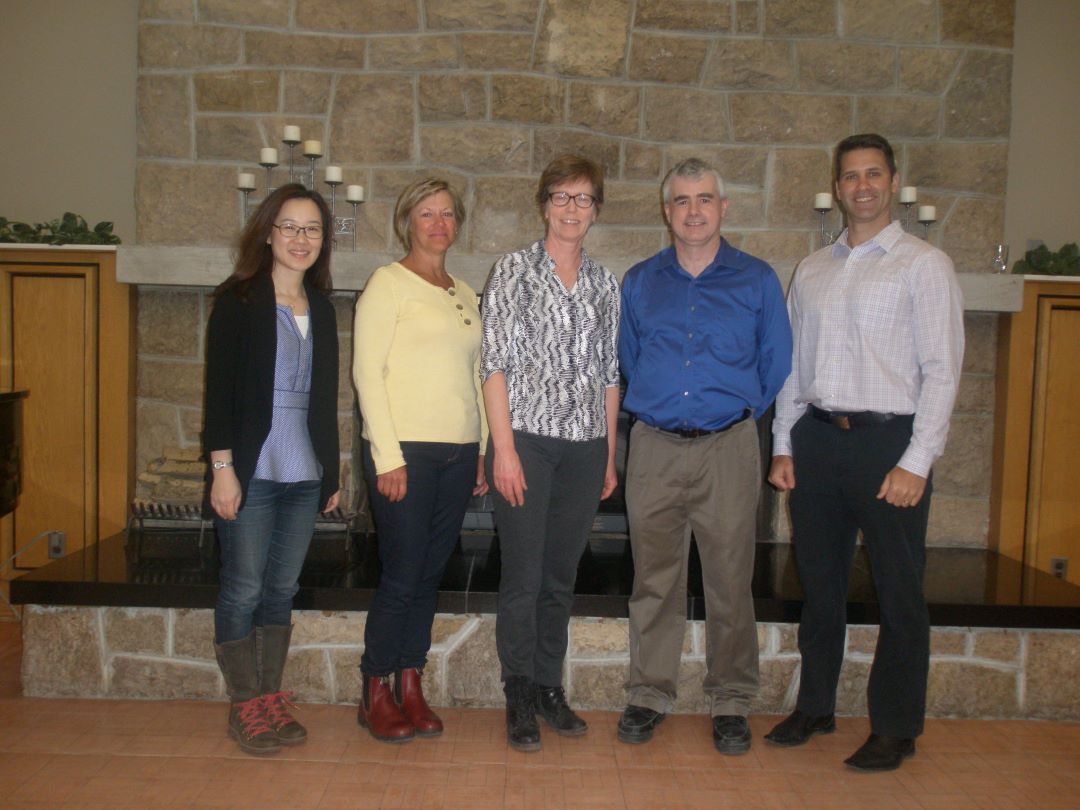
PT research focusing on fall arrest strategies
Sometimes working to just prevent falls isn't enough
By Marg SheridanAs most of Saskatoon grumbles about the thaw-and-freeze weather that the city has been experiencing recently, a group of researchers at the College of Medicine’s School of Physical Therapy see it as more than merely an inconvenience.
Dr. Catherine Arnold and her team of researchers, which includes co-principal investigator Joel Lanovaz from the College of Kinesiology, were announced as recipients of a SHRF research grant for their research titled ‘Does Fall Arrest Strategy Training (FAST) Added to a Fall Prevention Program Improve Physical Capacity to Prevent Serious Fall-related Injury in Women?’
“We’re taking the fall prevention a step further,” Arnold explained. “We know that most exercise programs are designed to help prevent a fall from happening by improving balance and strength, and that’s really important, but we’re suggesting that falls do happen – sometimes it’s hard to prevent them – and when they do happen there may be potential to decrease the risk of injury.”
The research, which looks at forward-falls since they tend to be the most common, will be targeted at older women – aged from their 60’s through mid-90’s to help ensure the program is appropriate both for those with a higher level of active function as well as the more frail population.
The teams’ proposal is that by improving a persons' capacity to land, they’ll be cutting down on the serious injuries associated with the falls, and through that they’ll be helping to decrease the strain on emergency medical services caused by these injuries.
“We’ve done a couple of studies leading into this where we’ve set up a lab protocol at the biomechanics lab at the College of Kinesiology,” continued Arnold. “Where we’ve compared the ability of older women vs younger women to land effectively and found that older cannot absorb the same amount of energy and control the descent the younger women can.
“And we’ve piloted this very simple training program that focuses on building strength in the arms, and reaction time - so we have pilot tested that and found that it does improve arm strength and mobility in older women in the community. The next step is to determine if the program can improve the ability to control a forward descent and decrease the risk of hitting the head or fracturing the arm.”
And while it’s easy to blame fall-associated injury on a loss of bone density, a problem a significant number of older women face, Arnold stresses that it is just one of the factors that can contribute to injury.
“Risk of fracture involves a whole bunch of things and bone is absolutely one of them,” said Arnold. “But it’s not just bone - it’s also the capacity of the muscles, and it’s how the arms might be positioned that can increase the risk of fracture. There are lots of other things that we don’t know a lot about that may increase the risk of fracture.”
The study will begin on April 1, and with a build-up period in place for this summer to perfect all the necessary protocol. The team is hoping to start their first intervention in the 12-week program in September.
“It’s very timely,” Arnold continued. “I think that there’s a lot of need right now to develop these community programs to prevent people from coming into the hospitals with these serious injuries - because that’s just going to get worse as the population ages even more in the next 10 years.”
